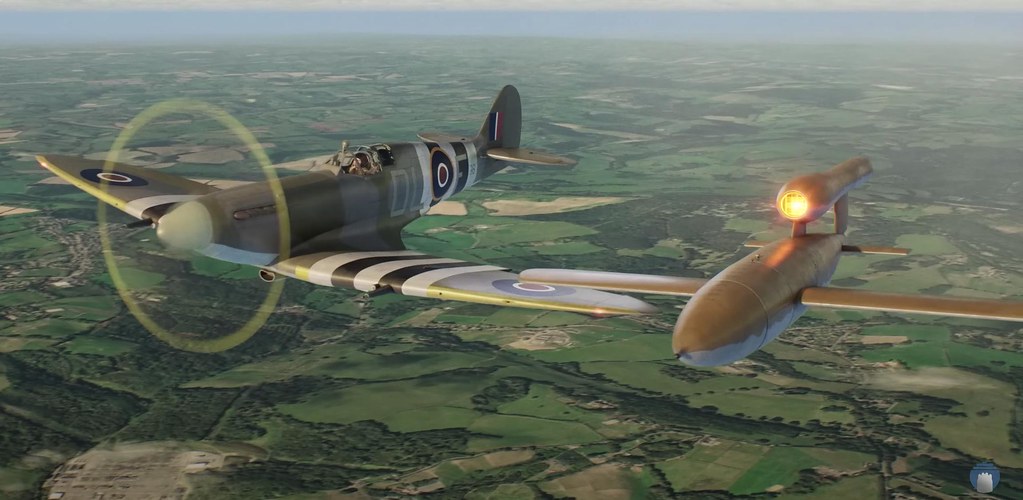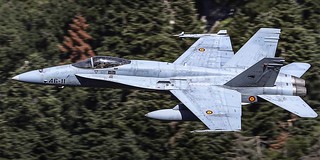The feat of the Australian pilot who bring down a V1 flying bomb without a single shot
The defense of the United Kingdom against German air raids during World War II was filled with acts of valour, and not just by British ones.
There were many foreign pilots who helped the United Kingdom when it fought alone against Nazi Germany: Poles, Czechs, Dutch, Americans, Belgians and also people who came from the confines of the British Empire: Australians, Canadians, New Zealanders and South Africans. One of those pilots was named Kenneth Roy Collier. He was born on November 5, 1920, in Glebe, New South Wales, Australia.

Kenneth enlisted on December 2, 1941, a few days before the Japanese attack on Pearl Harbor. After his enlistment, he received two tragic pieces of news: the death of his father on October 14, 1942, which was a veteran of the Australian Expeditionary Aviation who fought in World War I, and the death of his mother, on August 22, 1943, when Kenneth was doing his pilot training in Canada. Once in the UK, Kenneth fought with 91 Squadron RAF, based at RAF Manston, in the county of Kent, south-east England.

On Friday June 23, 1944, already as a flight officer, Kenneth went down in history flying a Supermarine Spitfire Mk XIV fighter, the NM698 (with numeral DL-F). The Australian pilot was chasing a V1 flying bomb, one of the "revenge weapons" with which Hitler deployed his terror strategy against the British. Kenneth ran out of ammunition. Knowing that the V1s were guided with a gyroscope, the Australian pilot performed a very dangerous manoeuvre: he brought his Spitfire close to the V1 and put the tip of his wing under the wing of the flying bomb, with the purpose of to destabilize it.

The first attempt went wrong and the V1's gyroscope managed to straighten its course again. On the second try he succeeded and the V1 destabilized and crashed in East Grinstead causing no casualties. As if such a maneuver wasn't difficult enough in daylight, Kenneth did it at 10:40 p.m., with very little light. That feat made the Australian pilot famous and other RAF pilots were encouraged to shoot down flying bombs in the same way , causing a few to fall on the ground far from their targets. Unfortunately, that maneuver didn't work with the V2 rockets, the second "revenge weapon" launched by Hitler.

This brave Australian pilot was last seen in flight on the morning of December 5, 1944. Kenneth was on an escort mission for 94 British Avro Lancaster bombers. Returning, they encountered German Bf-109 and Fw-190 fighters. Kenneth was seen attacking enemy aircraft. He was not seen again. That day he was declared missing. On June 29, 1949 his remains were found and it was learned that the Germans had shot him down at Scholven in eastern Germany. He was buried in the Rheinberg War Cemetery in Germany, along with 239 other fallen Australians and 3,090 other Allied combatants of World War II.
The YouTube channel Yarnhub published yesterday an interesting video dedicated to to the allied pilots who fought against the V1 flying bombs. The video also includes a recreation of Kenneth's feat:
|
Don't miss the news and content that interest you. Receive the free daily newsletter in your email: |
- Most read
- Spain will modernize its fleet of firefighting seaplanes and buy seven new DHC-515s
- Sierra Army Depot, a huge United States base with hundreds of Abrams tanks stored
- A former secret submarine base in Estonia and its important role in the Cold War
- United States' last Hueys: Vietnam-era veterans still flying in the US Air Force
- Eurofighter vs F-35: the opinions of professional pilots on these advanced fighters
- A spectacular video of an Alpha Scramble with Eurofighter aircraft from Spain and Germany
- Lampart, the new camouflage that the Polish Army is testing for its uniforms

 ES
ES







Opina sobre esta entrada: